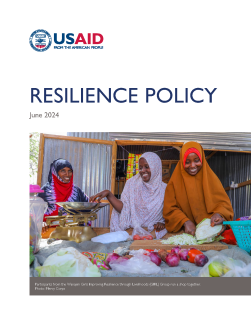USAID and Resilience
Building resilience to recurrent crises emerged as a USAID priority in the wake of large-scale humanitarian emergencies in the Horn of Africa and the Sahel in late 2011 and early 2012. It was recognized that new strategies and partnerships were urgently needed to prepare for and manage shocks and stresses in ways that protect development gains and limit the need for costly humanitarian assistance.
Since then, our understanding of risk has expanded beyond extreme weather events and natural disasters to include conflict and fragility, disease, economic instability, accelerating climate change, and other factors. USAID’s resilience framework has been expanded and now extends beyond agriculture to include health, education, governance, and other technical themes. When resilient to the shocks and stresses they face, people, groups, and systems in all their diversity can reduce and manage risk, maintain well-being, and continue progress towards their development aspirations.
In the increasingly complex environments in which USAID works, USAID seeks to strengthen resilience by:
analyzing and understanding interrelated risks;
layering development, humanitarian, and peace assistance in complementary ways; and
strengthening systems including inclusive market and social protection systems.
Managing risk, investing in resilience, and responding to shocks when they occur is a shared responsibility of governments, communities, and the private sector.

